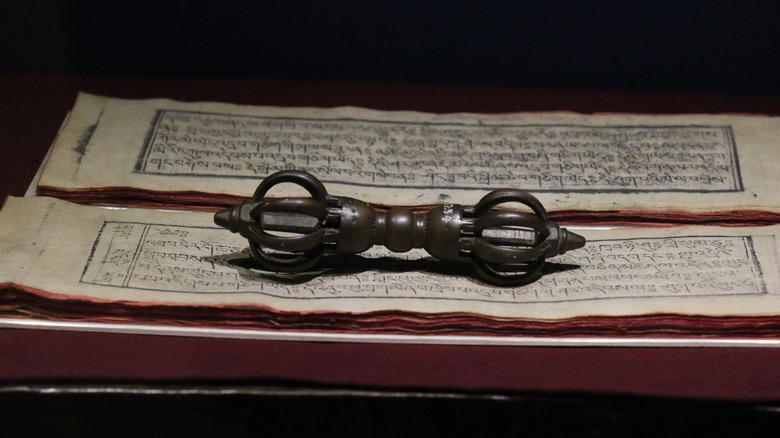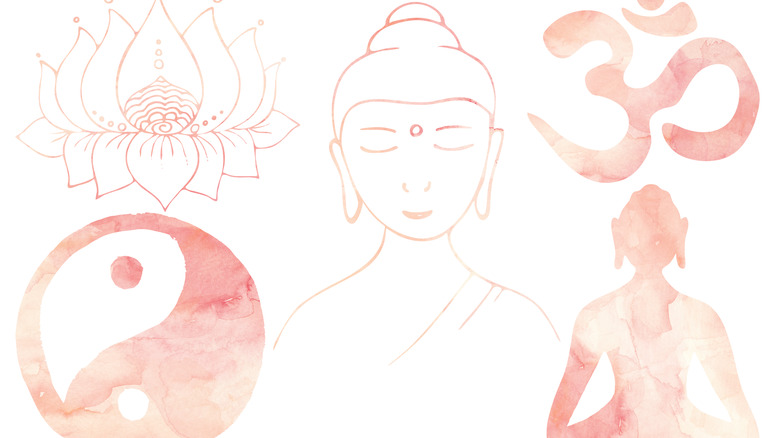What's The Difference Between Feng Shui And Vastu Shastra?
Chinese feng shui is a well-known practice of arranging furniture and objects around the home and workspace in an effort to clear negative chi energy and make way for positive chi, a process thought to improve harmony, luck, well-being, and prosperity. Indian vastu shastra is a lesser-known practice with the same aim of improving harmony throughout living and working spaces by fine-tuning the flow of energy, in this capacity called prana (via Dalalba). There's no denying that these two practices share some obvious similarities. Both entail an ancient set of principles with strong connections to the elements of nature. Both rely on placements in specific orientations based on cardinal directions. And both claim to balance the material with the spiritual.
You may be left thinking that, while feng shui was developed in China and vastu shastra comes from India, they're otherwise basically the same. But if you stopped there, you'd be missing some essential differences. There's much more that separates these ancient practices than their locations of origin.
The science is much older than the art
Even though feng shui is more commonly practiced throughout the western world, vastu shastra has been around for much longer. Vastu shastra is believed to have been established at some point between 6000 BC and 3000 BC (via Quartz), making it the precursor to feng shui, which has only been documented as far back as 960 BC (via Marquette University).
Vastu shastra is referred to as the Hindu science of architecture and construction. Science (shastra) is the key word there as it differentiates the practice from the art form of feng shui. In order to accomplish the goal of harmonizing human-built structures with the natural world, vastu shastra practitioners consider everything from the position of the moon and the magnetic fields of Earth to the amount of light and heat coming from the sun and the direction of the wind. In addition to these influences from nature, vastu shastra incorporates symbolic designs from the ancient Vedas, including the vastu purusha mandala, which introduces and explains the mathematical and cosmological aspects of the scientific study, notes Magic Bricks.
Feng shui (wind and water) is the Chinese art of placement with a heavy focus on change, movement, and flow, as described by the University of Metaphysical Sciences. It is connected to Taoism and aims to improve individual and familial health, wealth, and relationships by using directional placement of objects and furniture.
The associated elements and symbols of feng shui differ from those of vastu shastra
According to the principles of vastu shastra, each of the five elements comes from nature. These include earth, water, fire, air, and space (sometimes referred to as ether), and they are the same as those regarded in Ayurveda. The five elements of feng shui are a little different; fire, earth, metal, water, and wood represent the cycles of creation, destruction, weakening, and harm, as explained by Feng Shui Natural.
Furthermore, the symbols associated with each practice differ in culturally specific ways. In a house designed with vastu shastra in mind, images and statues of lords and goddesses such as Ganesha, Lakshmi, and Saraswati will often be placed alongside the om symbol and a six-sided star, per India Net Zone. Feng shui, on the other hand, relies primarily on items believed to usher in good luck and fortune. Dragons, laughing Buddhas, lucky cats, and lotus flowers are among the most popular, lists Look4ward Store. And, of course, there are the ever-popular symbols of yin and yang.
Whereas vastu shastra attempts to encompass a permanent and universal approach to the placement, construction, and architectural design of buildings anywhere on Earth, feng shui casts a more localized and changeable net that helps harmoniously balance what is already there. Both traditions offer practitioners tangible ways to improve the energy flow within their homes and workspaces by taking the natural world into consideration.


